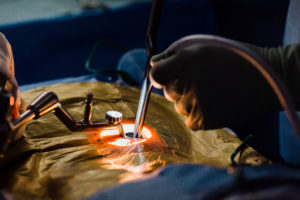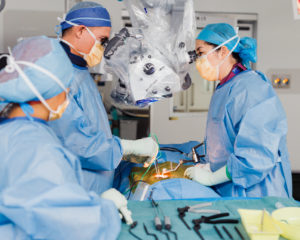Minimally invasive surgery (MIS) is performed with specialised instruments and techniques that minimise disruption to the body’s tissues. MIS requires a small incision and muscle dilation, gradually separating, rather than cutting and stripping the muscles that surround the spine.
MIS differs from traditional open spine surgery as it uses smaller incisions and direct access to affected spinal areas. The traditional open approach involves longer incisions, stripping large bands of muscle away from the spine. These muscles are then retracted or pulled to the side, so the surgeon can get a clear view of the vertebrae of the spine to be treated. This is avoided with MIS surgery.
To perform a minimally invasive procedure, a small incision is made over the area of the spine to be treated, and then a series of progressively larger dilators are inserted, one around the other, to gradually separate the muscles and create a “tunnel” or portal through which the surgery may be performed. These dilators create channels through muscle and other tissue, down to the area of interest. Instead of cutting the muscles and tissues, the dilators move them aside. A final tube called a retractor fits over the dilators. Its function is to hold the tissues apart during surgery. Once the retractor is in place, the dilators can be removed.
A microscope is used to view the spine through the retractor. Once the herniated disc has been removed, the retractor is withdrawn, the skin is closed and a small dressing is applied.



